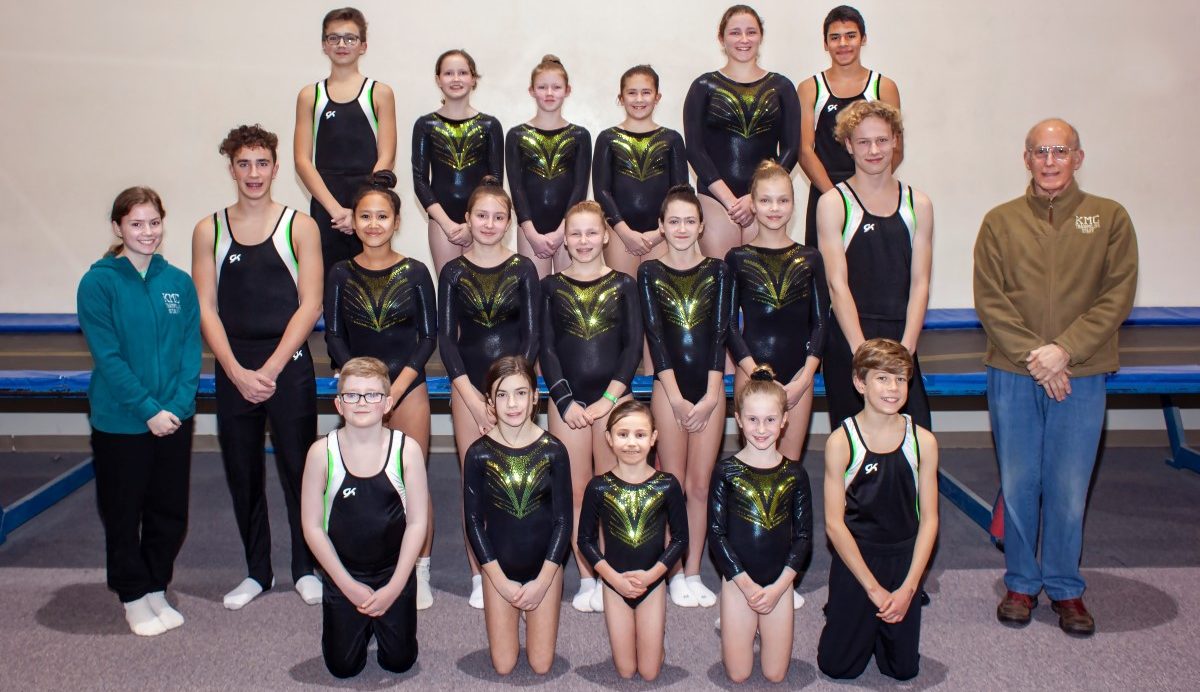So what does good trampoline look like?
Trampoline routines contain 10 consecutive skills. An athlete will do a number of preparatory bounces to get up to the desired height, and then will begin the routine. When the last skill lands on the trampoline bed, the athlete is expected to kill the bounce immediately, or take one extra bounce and stop.
The best performances include high bounce with a tight, straight, body line. While in contact with the bed, the chest should be upright arms set at vertical overhead. All skills should remain over the center of the trampoline and not travel to the edges. Skills in the pike or tuck position should kick out, meaning that the body snaps back to the straight position with arms down; rotating skills in the pike or tuck position are expected to kick out at vertical (upside-down). Traveling away from the trampoline center, poor kickouts, errors in position, all result in point deductions from the judging panel. Touching the frame or frame pad is one of several things that can end a trampoline routine; the athlete is not expected to recover or resume.
Double Mini-Trampoline
Double mini-trampoline (DMT) reminds me of the vault in artistic gymnastics. Athletes run at the DMT, jump up from the floor to the DMT bed, and perform two skills finishing on the landing mat beyond the DMT. The DMT itself is long and narrow. It has a bed about 11 feet long and 30 inches wide. The bed has two useful bed surfaces, a sloping surface where the running athlete first contacts the apparatus, and a horizontal segment where the athlete will dismount from the apparatus. The athlete performs two such passes in competition.
There are two types of passes. A “mounter pass” is a two jump pass; the athlete performs one skill from the sloping “mounter” surface up to the horizontal surface, and a second dismounting to the landing mat. The second is a “spotter pass,” a 3 jump pass; the athlete does a preparatory straight jump from the slope to the horizontal surface, and both skills are performed from the horizontal surface, with the second skill dismounting to the landing mat.
Comparing Trampoline and DMT
For the athlete, trampoline and DMT are somewhat different, and favor different body types and personalities. Trampoline is all about patience and waiting. The bed takes a considerable amount of time to travel from horizontal to the bottom of the bounce, and back. The athlete pushes to the standing position and must wait for the bed to be done pushing back. DMT is all raw meat and aggression. A good DMT performer is must run fast, hit the bed hard. The athlete makes a push, but the push must be quicker, and the bed response is quicker.
Scoring is different on the events as well. Difficulty on trampoline is simple and additive. Adding rotation or twist doesn’t gain that much compared to the performance deductions, so there is a low incentive to add difficulty. However, DMT difficulty ramps up very quickly. You get only half a point for a single rotation, but two full points for a double. Twists are worth more than on trampoline, and have rotation multipliers built in. Compared to trampoline, it gives the athlete much more incentive to add difficulty.
